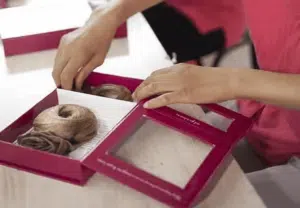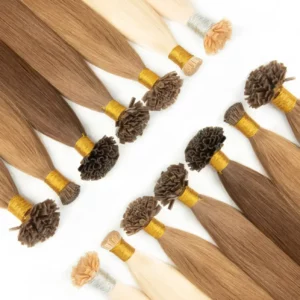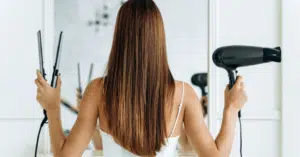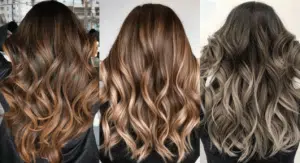Many stylists and clients face this question after removing extensions — will my hair ever be the same again? Let’s break down what’s normal, what’s not, and how to help hair recover properly.
Most hair loss after extensions is temporary. The scalp may shed weak strands due to tension or buildup, but once pressure is relieved and proper care resumes, hair typically grows back within 3–6 months.
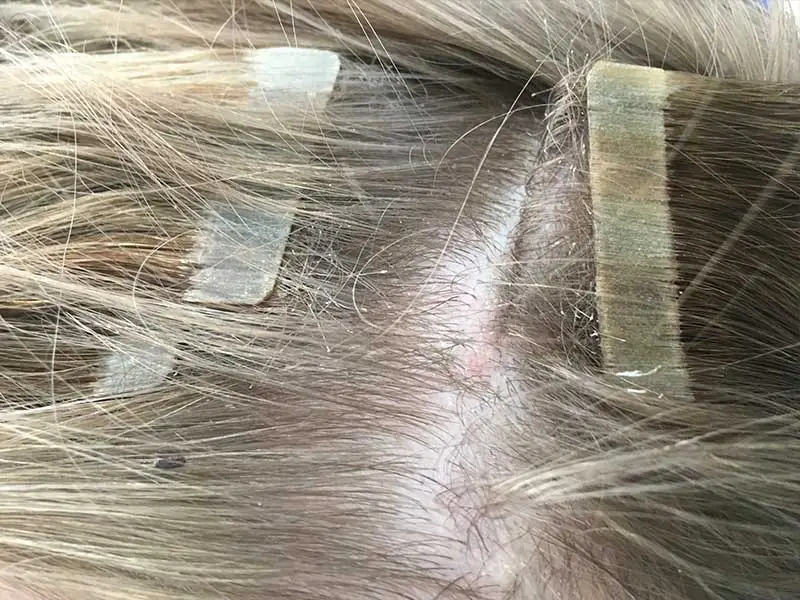
When handled correctly, your natural hair can fully recover from extensions. Let’s explore each aspect in depth — from what causes shedding to how to restore growth safely.
Is it normal to lose a lot of hair when taking extensions out?
Many clients panic when they see hair coming out after removing extensions. Let’s clarify what’s normal and what’s not.
Yes, it’s normal to see a large amount of shedding when taking extensions out — but only if it’s natural shedding that was trapped inside bonds or tapes. On average, people lose 50–100 hairs daily, so if extensions were worn for 2–3 months, this buildup is expected.
Dive Deeper
When extensions are installed, natural shedding continues — but the shed hairs can’t fall freely. They remain attached within the bonded area until removal. Once the extensions come off, all that accumulated shedding releases at once, creating the illusion of “massive” hair loss.
However, excessive hair loss might indicate:
| Possible Cause | Explanation | Solution |
|---|---|---|
| Poor installation technique | Too much tension or improper sectioning causes traction alopecia | Choose an experienced stylist |
| Overwearing extensions | Keeping extensions in beyond recommended duration leads to tangling and breakage | Follow the 6–8 week maintenance schedule |
| Using low-quality adhesive or tape | Cheap glue damages cuticles and follicles | Use salon-grade keratin or medical-grade tape |
| Improper removal | Pulling or scraping during removal can damage roots | Always remove professionally with the right remover |
Normal shedding is expected. True damage shows as thinning patches or brittle ends. If this happens, give your scalp recovery time before reinstalling extensions.
Hair loss from extensions will it grow back?
Seeing thinning after extensions can be stressful, but there’s good news — most hair does grow back unless follicles are permanently damaged.
In most cases, shedding caused by traction or adhesive strain is temporary. With proper scalp care and nutrition, regrowth starts within weeks and becomes noticeable in 3–6 months.
Dive Deeper
Hair loss from extensions usually falls into two categories:
| Type | Cause | Recovery Time | Prognosis |
|---|---|---|---|
| Temporary shedding | Tension, poor installation, or buildup | 3–6 months | Full regrowth |
| Traction alopecia | Chronic stress on hairline or crown | 6–12 months (or more) | Partial or full, depending on severity |
If the follicles aren’t scarred, new growth will occur. Here’s how to help the process:
- Improve scalp circulation – Massage your scalp daily using gentle circular motions.
- Use nourishing oils – Argan, rosemary, or castor oil can stimulate regrowth.
- Avoid tight hairstyles – Give your scalp freedom from tension.
- Trim damaged ends – Prevent split ends from traveling upward.
- Maintain a balanced diet – Protein, biotin, and iron support faster recovery.
If hair loss persists beyond six months, consider consulting a trichologist for a professional scalp assessment.
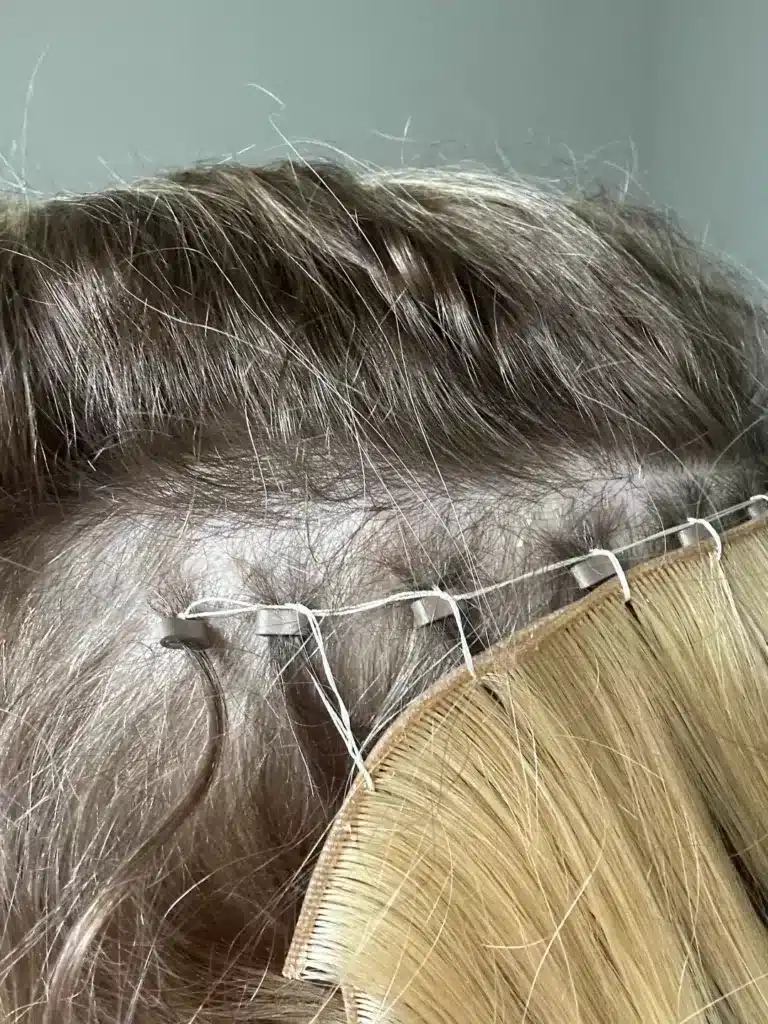
What to do when extensions cause hair loss?
When extensions lead to visible thinning or bald spots, immediate action is needed to prevent long-term damage.
The first step is to remove all extensions immediately and allow the scalp to rest. Then, focus on stimulating the follicles and repairing the barrier with gentle care.
Dive Deeper
Here’s a professional action plan:
Step 1: Stop the strain
Remove extensions without pulling or combing aggressively. Use salon-approved adhesive remover. Do not reinstall new ones right away.
Step 2: Treat the scalp
Use a mild, sulfate-free shampoo to clean the scalp, followed by a nourishing conditioner. Massage lightly to promote blood flow.
Step 3: Apply growth treatments
Use serums with ingredients like biotin, caffeine, niacinamide, or rosemary extract. These boost microcirculation and follicle activity.
Step 4: Nourish from within
Take supplements rich in zinc, vitamin D, iron, and omega-3 fatty acids. Internal nutrition accelerates regrowth.
Step 5: Switch to gentler options
If you must wear extensions again, choose clip-ins or halo hair — they don’t pull on the scalp and allow flexibility.
The earlier you take action, the higher the chance of full recovery. Never wait until traction alopecia forms visible bald patches.
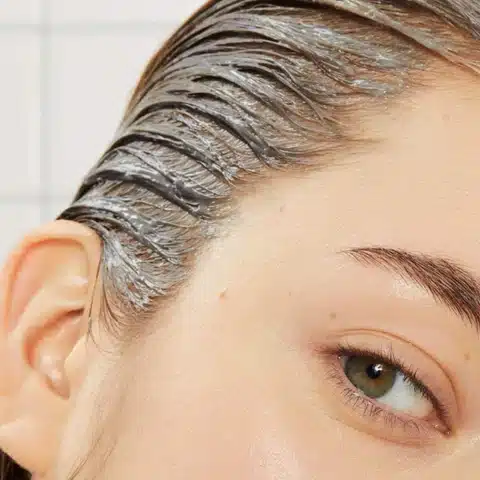
How long does it take for your hair to recover from hair extensions?
Recovery time depends on the damage level and care routine. Generally, hair begins to regrow within 6 to 12 weeks, but full density can take 6–12 months.
Dive Deeper
Every scalp is different. Recovery timelines vary based on these factors:
| Factor | Impact | Recovery Expectation |
|---|---|---|
| Duration of damage | Long-term stress delays healing | 6–12 months |
| Hair type | Fine hair is more fragile | May need longer rest period |
| Extension method | Tape-ins are gentler; keratin bonds create more tension | 3–9 months |
| Care routine | Consistent oiling and massage speed up regrowth | 3–6 months |
During recovery:
- Avoid chemical treatments like bleaching or perming.
- Use strengthening masks with keratin or protein once weekly.
- Maintain a healthy scalp environment — clean, hydrated, and balanced.
- Schedule trims to remove breakage.
Patience is key. Even if regrowth feels slow, follicles usually return to their normal cycle once tension is removed.
hair loss from extensions will it grow back?

Should I give my hair a break from extensions?
Absolutely — yes. Giving your hair a rest between extension installations is essential for long-term scalp and hair health.
A 4–8 week break allows follicles to breathe, restore elasticity, and rebuild strength before the next installation.
Dive Deeper
Many professional stylists recommend following the “rest and repair” cycle — wearing extensions for 2–3 months, followed by 1–2 months of natural hair recovery.
Here’s what to do during your break:
- Scalp Detox: Use a gentle exfoliating scrub or clarifying shampoo to remove buildup.
- Deep Conditioning: Apply nourishing masks with argan oil, shea butter, or keratin weekly.
- Protective Styling: Braids, buns, or silk wraps protect your hair without tension.
- Hydration: Use leave-in conditioner to prevent dryness and breakage.
- Trimming: Keep ends healthy to encourage even growth.
Taking breaks doesn’t mean giving up extensions — it ensures you can wear them longer, safely, and beautifully. Healthy roots lead to stronger results in every new installation.
My Opinion
We know countless cases where stylists and clients panic after noticing hair shedding from extensions. The truth is, real recovery always depends on method, quality, and aftercare.
Extensions themselves aren’t the enemy — poor techniques and cheap materials are. Using high-quality, full cuticle hair extensions from a trusted manufacturer like Hibiscus Hair dramatically reduces the risk of damage. The smoother, intact cuticles ensure the extensions behave like natural hair and cause minimal stress to roots.
When installed and maintained correctly, extensions can enhance, not harm, natural hair.
FAQ
1. Can extensions cause permanent bald spots?
Yes, if worn too tight or for too long. This condition is called traction alopecia and requires immediate care.
2. How can I tell if the hair loss is temporary?
If small new hairs start to grow along your hairline within weeks, it’s temporary shedding, not permanent loss.
3. What extensions are safest for weak hair?
Clip-ins and halo extensions are the gentlest because they don’t use glue, heat, or beads.
4. Can I use oils on my scalp after removal?
Yes. Natural oils like castor or rosemary oil stimulate circulation and strengthen follicles.
5. Does the quality of extensions affect hair loss?
Absolutely. Poor-quality hair or adhesives tangle easily and pull more during removal. Always choose full cuticle, ethically sourced hair.
Conclusion
Hair loss from extensions is mostly temporary and reversible. With the right installation, removal, and aftercare routine, your hair can regain its strength, volume, and confidence — just give it time and proper care.
Hibiscus Hair Manufacturer has been dedicated to producing high-quality hair extensions for 25 years and is a recognized leader in the industry. If you are interested in finding a reliable hair extensions supplier and wholesale for your brand, please visit our website for more information:
QUALITY

